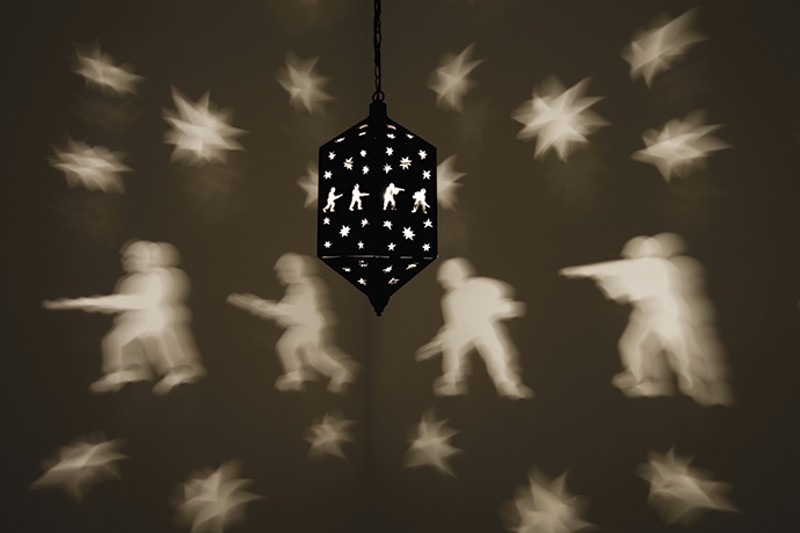
Misbah, 2006–07. Brass lantern, metal chain, light bulb and rotating electric motor, dimensions variable. Rennie Collection, Vancouver. © Mona Hatoum. Image courtesy of Fondazione Querini Stampalia Onlus, Venice. Photo: Agostino Osio
This Friday, two new art shows with political overtones have their openings. At the Pulitzer, Palestinian installation artist Mona Hatoum has her first exhibition in the U.S. in decades. And at the Craft Alliance, artist Boris Bally wants to jumpstart a conversation about guns. What could be more timely?
Mona Hatoum: Terra Infirma
Pulitzer Arts Foundation
3716 Washington Blvd. | www.pulitzerarts.org
Opens 6-9 p.m. Fri., Apr. 6. Through Aug. 11.
Palestinian-born installation artist Mona Hatoum brings together more than 30 of her works for this show, her first exhibition in America in more than two decades. Hatoum’s sculptures and installations often evoke domestic settings, but subvert the attendant ideas of comfort and safety into something more menacing. Dormiente takes the shape of a seven-foot-long cot, but one made from an upsized cheese grater. Misbah appears to be the sort of high-end light projector you might install in a nursery so that bears and bunnies dance on the walls at night; instead armed figures stalk each other through the darkness. The vocabulary of her work is minimalism and surrealism, but it’s filtered through her feminist perspective, further shaped by her own sense of dislocation in a world that doesn’t recognize her native country. Hatoum discusses her work at the museum at 2 p.m. Saturday, April 7.
I.M.A.G.I.N.E. Peace Now
Craft Alliance Center of Art + Design
6640 Delmar Blvd. | www.craftalliance.org
Opens 6:30-8:30 p.m. Fri., Apr. 6. Through May 13.
Boris Bally wanted to have a conversation about guns in America, so he turned to his craft. He asked his fellow metalsmiths to transform guns into works of art while still respecting the craft inherent in each weapon’s manufacture. All of the guns came from community buy-back programs, and all are still recognizable as guns. Some are integrated into another object, such as the petite handgun that became a link in the chain handle of a handbag. Others are transformed into something else — a pistol swathed in layers of colored twine until its recognizable outline blurs into something unfamiliar, or the pair of doll’s legs topped by a cloud of pink and black tubes that we suddenly realize are gun barrels and bullet casings.

